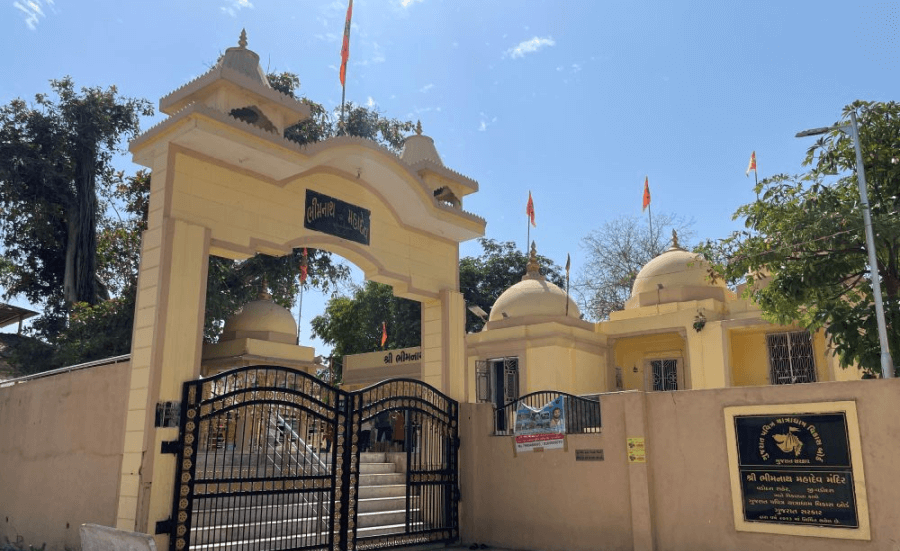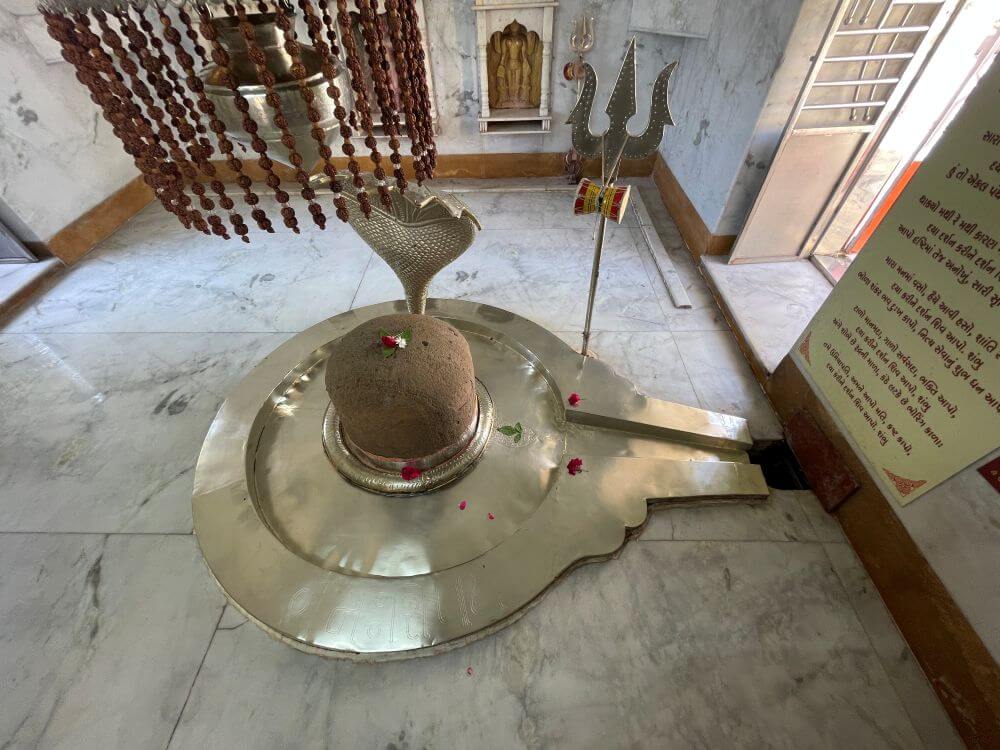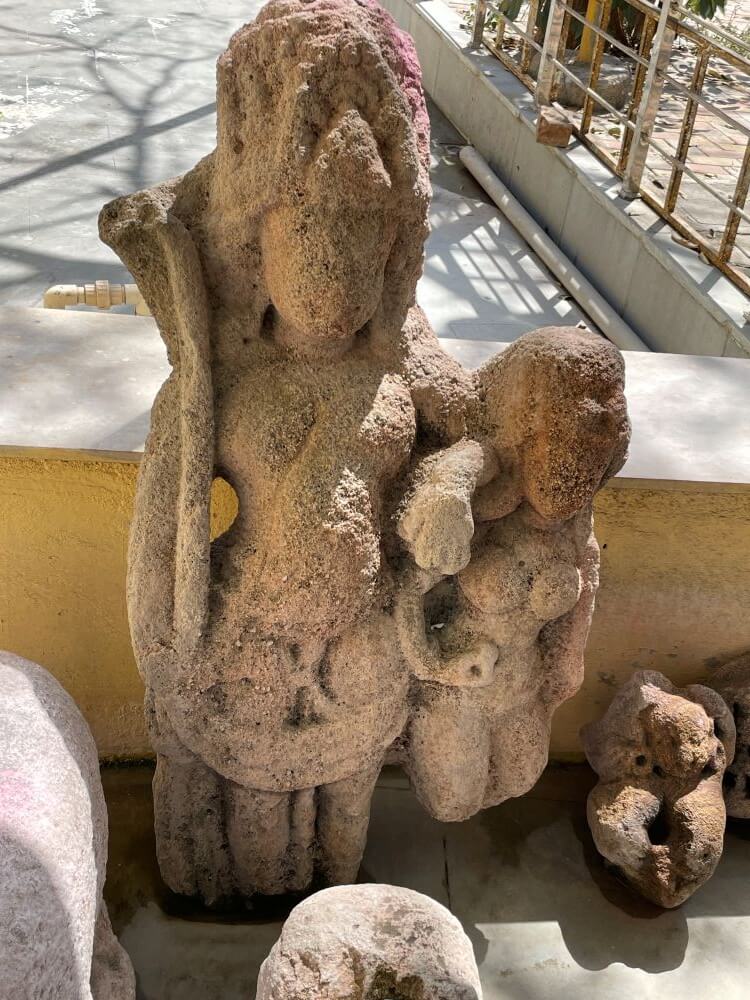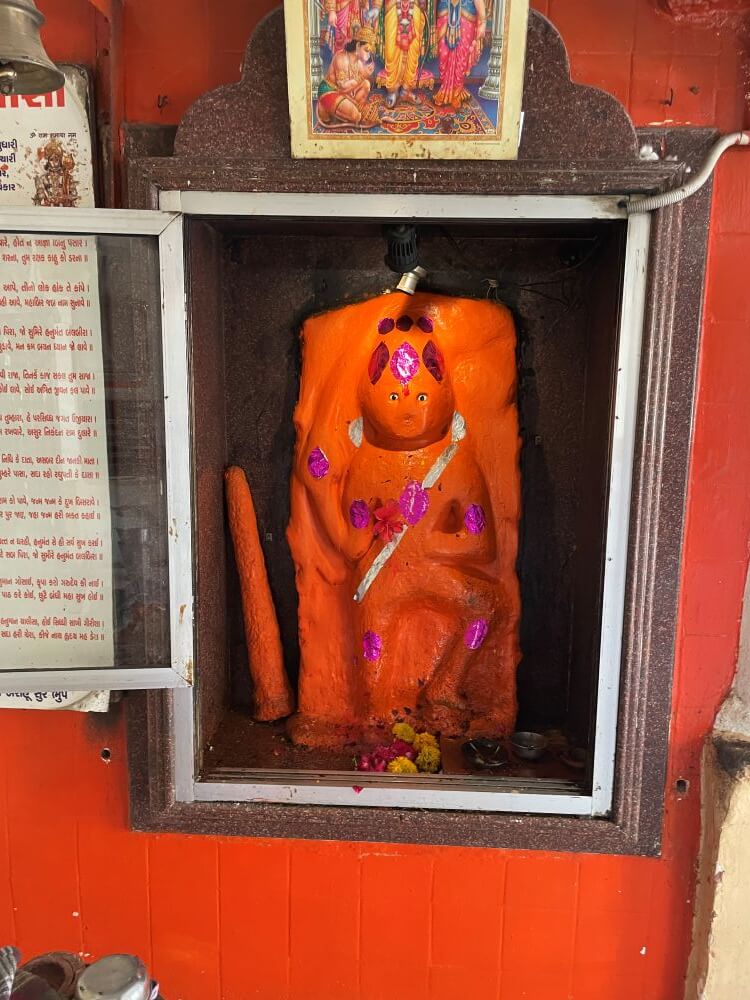
 Vadodara (Baroda), known in ancient times as Vatpadrak or Vatpadrapur, is a historic city protected by the Navnath Mahadev deities, among whom Bhimnath Mahadev is the sixth. According to legend, the Shivlinga at this place was formed after Bhim, the Pandava prince, struck it with his mace. It is said that even today, the marks of Bhim’s mace can be seen on this Shivlinga. According to mythology, Brahmarshi Vishwamitra, the composer of the sacred Gayatri Mantra in the Rigveda, established this Shivlinga here. A distinctive feature of this temple is that it is without a traditional tower (shikhara) and only has a kalash (finial) on top.
Vadodara (Baroda), known in ancient times as Vatpadrak or Vatpadrapur, is a historic city protected by the Navnath Mahadev deities, among whom Bhimnath Mahadev is the sixth. According to legend, the Shivlinga at this place was formed after Bhim, the Pandava prince, struck it with his mace. It is said that even today, the marks of Bhim’s mace can be seen on this Shivlinga. According to mythology, Brahmarshi Vishwamitra, the composer of the sacred Gayatri Mantra in the Rigveda, established this Shivlinga here. A distinctive feature of this temple is that it is without a traditional tower (shikhara) and only has a kalash (finial) on top.
It is believed that the temple has a connection with the Pandavas’ exile. The Mahabharata, authored by Vyasa, narrates the story of their exile in the Sabha Parva and Vana Parva. Due to their defeat in the game of dice, the Pandavas had to spend 12 years in exile and 1 year in disguise. During that time, they are believed to have traveled southward through the Shurparaka (Sopara) region in Maharashtra, as well as Gujarat and Saurashtra. As per the significance of this location, all the Pandavas had stayed in the forests of Vatpadrak (now Vadodara).
The Mahabharata, authored by Vyasa, narrates the story of their exile in the Sabha Parva and Vana Parva. Due to their defeat in the game of dice, the Pandavas had to spend 12 years in exile and 1 year in disguise. During that time, they are believed to have traveled southward through the Shurparaka (Sopara) region in Maharashtra, as well as Gujarat and Saurashtra. As per the significance of this location, all the Pandavas had stayed in the forests of Vatpadrak (now Vadodara).
Bhim used to never eat without first performing Shiv worship. On arriving here, he began searching for a Shivlinga. Despite his efforts, he couldn’t find one. Meanwhile, the other Pandavas were growing hungry, but could not eat until Bhim completed his worship. At that point, Arjuna shaped a clay pot into a Shivlinga-like form and told Bhim that he had found one.
Bhim worshipped it with devotion. However, during conversation after the meal, Arjuna revealed how he had made the “Shivlinga.” Realizing he had worshipped not a real Shivlinga, but a clay pot, Bhim grew furious and smashed it with his mace. At that very moment, a real Shivlinga emerged from the broken pot. Since Bhim performed the worship, the deity here is known as Bhimnath Mahadev. The present structure of the temple was built during the Gaekwad rule of Vadodara. It was recently renovated, giving the temple its current appearance.
The temple is located on an elevated area near the Bhimnath Bridge in Vadodara. A large gateway marks the entrance. A few steps lead to the temple courtyard, which is enclosed by high walls and paved throughout. In front is a Nandi pavilion with a domed spire near an ancient banyan tree. It houses a large stone statue of Nandi. In front of the Nandi pavilion is a tortoise. Some distance away stands the stone temple of Bhimnath Mahadev. The temple consists of an assembly hall and two sanctum sanctorums. Large images of Shiv and Kalbhairav adorn the outer walls of the sabhamandap.
The main hall contains broad stone pillars and atop a sturdy beam sits a brass idol of Mahadev. In the sanctum sanctorum, at ground level, there is a large Shivalinga, encircled by a five-metal circular shalunka (base). This Shivlinga is said to be larger than those in other temples in Vadodara. Some marks on the stone Shivlinga are believed to be from Bhim’s mace strike, according to local faith. A tall metal cobra idol coils around the Shivlinga, above which is an abhishek vessel and a decorative brass umbrella. Marble wall niches within the sanctum house idols of Ganapati, Kartikeya and Parvati. The four-armed marble idol of Kartikeya features a Shivlinga and an image of Ganesh in the upper hands.
To the left of the main hall is the sanctum of Somnath Mahadev, accessed by descending around ten steps. A Shivlinga in a brass base resides there, with a large copper serpent idol above it. Within the temple courtyard are two small Shiv temples and a Hanuman temple. The temple premises were renovated with grants from the Gujarat Pavitra Yatradham Vikas Board. Daily aarti is performed at 7:30 a.m. and 6:30 p.m. Every Monday, bhajans and kirtans are held. Maha Shivratri and the Shravan month are celebrated with great enthusiasm, drawing thousands of devotees. During Shravan, a Patotsav (anniversary of the deity’s installation) is celebrated.



